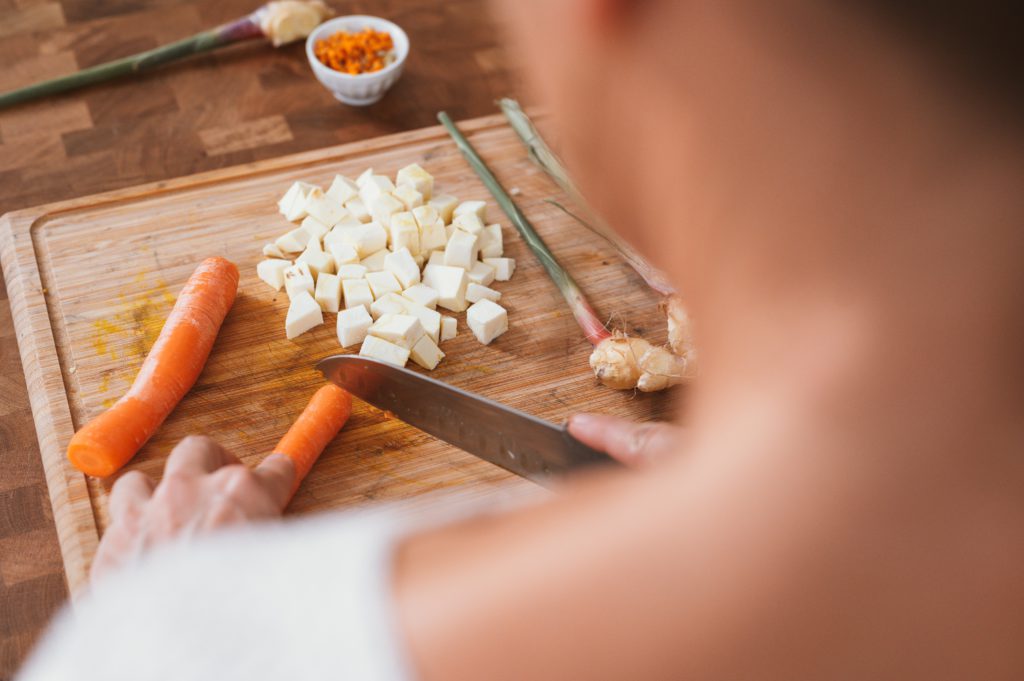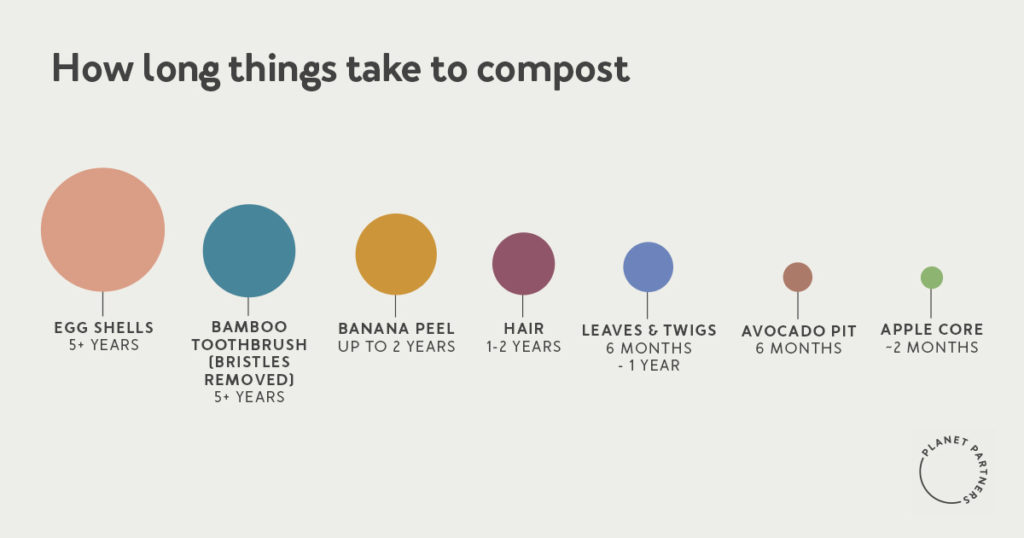Looking to get into composting, but don’t know where to start? We’ve got you. That’s why we created a go-to resource to help kickstart your composting journey.
Why Compost?
Not that you need convincing, but composting can make a huge impact.
Food waste is a massive issue in North America. 58% of food produced in Canada is lost or wasted. That’s 35.5 MM tons each year. Food waste in Canada creates about 56.6 MM tons of CO2 yearly.
The average American wastes about one pound of food daily. In the US 14% of landfill waste is made of food waste that could be composted.
When food heads to landfills, it ends up in an environment that lacks oxygen, so organic matter can’t decompose aerobically. Our food waste ends up releasing methane instead, a powerful greenhouse gas. The methane gas created by food in the landfill is 25 times more damaging to the environment than CO2.
Now those numbers can seem scary, but not to worry — that’s where composting comes in. Composting reduces methane emissions that are released when food is thrown in landfills, and helps reduce 14% of landfill waste, or up to 50% if you include yard waste in the mix. Saving your food waste from the dumpster is a huge part of living zero-waste. And that’s something we can all get behind.
How To Prevent Food Waste In The First Place
Before we dive into all things composting, let’s talk about how we can reduce our food waste overall.
Cut down on your food waste through buying smaller quantities. No one loves going on multiple grocery runs, but buying a little bit of produce at a time can go a long way to minimize food waste and environmental impact.
Produce getting a little squishy? Try chopping and freezing it! This works for smoothie ingredients, or try freezing pears and apples for future baking. Some produce, like carrots, can be blanched and frozen. For those slightly too-ripe veggies, throw them all into a stew or soup.

Getting Your Compost Started
Feeling ambitious and want to start your own backyard compost? Here’s a little intro to open air, or hot composting:
- Get some kind of bin or container for your compost. It should be between 3ft cubed and 5ft cubed. Make sure that it gets some sun exposure, and that it has a way to drain. We don’t want any mold growing in there.
- Put down large branches or a wood pallet as the base, then a layer of soil. This can kickstart the composition process.
- If you’re feeling daring, you can add some manure into the mix. It adds nitrogen, an essential ingredient to speeding up decomposition. If this grosses you out (and we don’t blame you), you can always try mushroom manure.
- Now it’s time to throw in your compostables! There’s a bit of a method to it: layer your kitchen waste (green ingredients) with yard waste like dried leaves and twigs (brown ingredients) in a 1:2 ratio. More on that below.
- Wait two weeks to kickstart the composting process, then turn your compost every week or two with a shovel. This helps bury new materials, air out the compost and speed up the composting process.
- Give yourself a few months (it can be ready in as little as three), and you’ll have some nutrient-rich soil and reduced your food waste — high fives to you! The soil should be dark brown and crumbly, and the original materials shouldn’t be recognizable.
A quick note on green and brown ingredients:
- Green ingredients are nitrogen-rich, and include: grass clippings, fruit and veggie scraps, flowers, chicken manure, tea leaves, coffee grounds and filters, and hedge clippings.
- Brown ingredients are carbon-rich, and include: dry leaves, newspaper, wood ash, chopped twigs and branches, shredded cardboard, dryer lint and eggshells.
Carbon and nitrogen are both needed for decomposition.
Looking to compost in your kitchen? Follow these steps:
- Get yourself a stainless steel compost bucket.
- If you have curbside compost pickup, take a look at the list of compost do’s and don’ts that your city provides.
- Otherwise, throw fruit and veggie scraps, coffee grounds, tea leaves and rinsed egg shells in there. Ta-da: you’ve officially started composting!
Want to turn your kitchen waste into usable dirt in a day or less? Check out Pela‘s Lomi: a counter top compost machine that breaks down organic, compostable and bioplastic waste in just hours, and reduces waste volume by 80%!
How To Compost Without A Backyard Or Curbside Pickup
Nowhere to bring your kitchen compost? No worries! You’ve got options.
You can drop off your compost mixture at a local farm, or compost drop off. Just Google in your local area. Another option is using Sharewaste: this site connects people who want to compost their kitchen scraps with people who already compost. They have networks set up around the world.
Something to keep in mind: every drop off will have their own rules of what can and can’t be composted. Make sure you do your homework first.
What Can And Can’t Be Composted
CAN:
- Fruit and veggie scraps
- Bread
- Cereal
- Rinsed egg shells (these don’t break down easily for backyard composts: use only if curbside pickup/local drop off allows)
- Pet and human hair
- House plant trimmings
- Dryer lint from natural material textiles only
- Newspaper
CAN’T:
- Meat
- Dairy products
- Fat, grease and oils
- Diseased plant clippings
- Pet droppings
- Coal ash
- Yard trimmings treated with pesticides
- Dryer lint from synthetic clothing
- Black walnut leaves or twigs
If you’re composting in your backyard, be sure to include these staples:
- Grass clippings
- Leaves
- Bush trimmings
- Twigs and chopped branches
- Manure (preferably organic)
Compostable Items Timeline
Keep in mind that some things can degrade within a few months, while others can take years. Curbside composters don’t have to put as much thought into this as someone who’s composting in their own backyard. Breaking items into small pieces can help the decomposition.
When items are buried in your backyard to compost, here’s how long they take to fully decompose:

How To Make Composting Not Smelly
This is the question, isn’t it? Luckily, composting doesn’t have to mean a nasty smell.
Store your in-house compost bin in the freezer
Seems too simple, right? Keep your compost bin in the freezer, and you’ll eliminate bad smells and fruit flies. Definitely a win.
Try New Composting Tech
New technology allows composting to be done quicker and cleaner than ever. Pela has created Lomi, their countertop composter that turns organic, compostable and bioplastic waste into dirt in just hours! It reduces waste volume by 80% and prevents the creation of methane that’s given off when food waste ends up in landfills.
Use compost filters
Yes, this is a thing! You can get filters that negate the nasty odours that usually accompany composting. Plastic Free Shop sells their stainless steel compost bin with a replaceable Cotton and Activated Charcoal Filter.
Skip the dairy and meat
Rotting dairy and meat products give off a nasty smell. Make sure you’re not disposing of animal products in your compost, and you’ll be good to go.
Bring your green and brown material back in balance
If you’ve got too many green ingredients in your outdoor compost pile or if they’re too isolated from brown ingredients, it might start to stink. Add in some more brown ingredients, like newspaper, twigs and leaves to bring your compost pile back into balance.
Get some air
Compost needs oxygen to decompose food waste properly. Remember to turn your compost pile to give it some air, and continue the decomposition process. Try adding in some light materials, like dry leaves or grass to prevent it from compacting again.
Dry it out
When your backyard compost gets too wet, things can get real smelly real fast. Turn your compost, and add dry leaves and grass to balance out the moisture.
Check out our interview with Pela — the company who created the world’s first 100% compostable, eco-friendly phone case — where we talk zero waste, composting and sustainability.
Looking for more ways to live with low-waste? Check out our article on going plastic-free in the kitchen.

